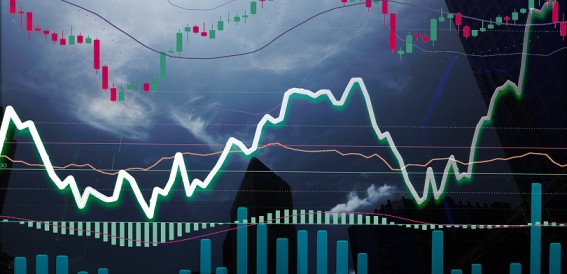Return on Assets (ROA) is a key financial metric that measures a company’s profitability relative to its total assets. It indicates how efficiently a company utilises its assets to generate net income. Understanding ROA helps investors, analysts, and business owners assess a company’s financial health and compare its performance with industry benchmarks. This article explores the meaning, importance, formula, and practical applications of ROA, offering a comprehensive guide to this essential financial ratio.
Definition and Importance
Return on assets evaluates how a business utilises its existing assets to create profits. A typical financial assessment tool, ROA, shows the company’s health level to investors and stakeholders through percentage data analysis. An enterprise with greater ROA yields better returns on its resource investment for creating profits. A reduced ROA rate reveals that the business fails to use its resources efficiently.
Types of Assets
Companies possess two major types of assets:
- Tangible assets: Includes land, buildings, vehicles, and cash.
- Intangible assets: Includes patents, trademarks, and intellectual properties (IPs).
Firms investing in more tangible assets usually achieve lower returns than organisations using intangible assets to generate greater returns on assets. Organisations with higher capital investment in assets must dedicate more resources to acquiring and maintaining these assets, which reduces the profitability percentage.
Begin your investing journey today. Your Demat account is the first step.
Why is ROA Important?
Asset utilisation efficiency is the main factor distinguishing one business from others in its market. High ROA attracts investor interest because such businesses consistently generate stable revenues. Businesses should enhance their operations when ROA results indicate poor performance. Evaluating ROA helps:
- Identify efficiency in asset usage.
- Assess investment potential.
- Compare company performance within the same industry.
Understanding the ROA of a company is crucial because investors wish to know how well a company can convert its assets into earnings. Moreover, a lower return on assets helps a company identify deficiencies and work on them accordingly. Hence, return on assets is a crucial indicator of how a company is performing, helping it achieve success by taking corrective actions on time.
ROA Formula
Return on Assets (ROA) is calculated using the formula:
ROA = (Net Profit / Total Assets) × 100
Since a company’s asset value changes over time, a more accurate approach is to use the average asset value in the calculation:
ROA = (Net Profit / Average Assets) × 100
This formula helps measure how efficiently a company uses its assets to generate profit. A higher ROA indicates better financial performance and asset utilisation.
Example Calculation: Comparing Two Companies
Consider two companies:
- AC Ltd: Net profit of ₹1,00,000 and total assets of ₹10,00,000.
- YZ Ltd: Net profit of ₹2,00,000 and total assets of ₹25,00,000.
ROA Calculation:
- AC Ltd: (₹1,00,000 / ₹10,00,000) × 100 = 10%
- YZ Ltd: (₹2,00,000 / ₹25,00,000) × 100 = 8%
Although YZ Ltd has higher earnings, AC Ltd is more efficient in converting assets into profits.
What is a Good ROA?
A good general benchmark for determining ROA value might be:
- 5% or more: Decent efficiency.
- 20% or more: Excellent performance.
Industry-Specific Comparisons
ROA depends on the industry. For example, a manufacturing company with a 6% ROA could still perform better than its peers in the industry. In contrast, a technology firm with a 15% ROA might underperform compared to its sector’s standard of 20% or higher. Hence, variance among industries becomes critical in making such comparisons.
ROA can be misleading if companies from different industries are compared. For instance, comparing the ROA of a tech firm against that of a manufacturing firm would not produce a fair picture of efficiency because their asset structures and capital requirements differ.
ROA vs. ROE
ROA and Return on Equity (ROE) are often compared but differ in scope:
- ROA: Shows profitability levels by calculating all assets, including debt-fed assets.
- ROE: The Return on Equity analysis determines profitability through a shareholder-equity assessment that eliminates debt from calculations.
In a debt-free company, ROA and ROE would be equal. However, with debt financing, ROE is usually higher. The main difference between ROA and ROE lies in how the company’s debt is accounted for. Shareholder equity and total assets will be equal without debt, making ROA and ROE the same.
Drawbacks of ROA
Although ROA is an informative measure, it has some drawbacks:
- Industry Differences: The measures of ROA exhibit large variations between industries that use substantial assets versus those with minimal assets.
- Accounting Practices: Asset valuations can differ depending on depreciation methods and financial adjustments.
- Debt Influence: The ROA figures from businesses with significant debt amounts can become distorted.
- Limited Scope: The evaluation of the financial state with ROA shows limitations because it fails to understand corporate finances fully. Investors must combine ROE and ROI evaluation with other indicators to establish a full assessment.
Holistic Financial Analysis
The calculation of ROA does not reveal important business performance aspects, including market competitiveness, future growth potential, and operational efficiency beyond asset usage rates. Other than asset efficiency areas, analysts and investors scrutinise companies through multiple financial indicators during their assessment processes.
Conclusion
Return on Asset encapsulates how well the use of corporate assets leads to profitability by measuring how effectively a company employs its resources to generate profit. The ratio helps investors understand asset utilisation in relation to profitability. Using it exclusively may be misleading. Rather, an analysis in conjunction with other financial measurements and by comparison with industry tangents would be more useful.
Investors must look at this context and other measures for complete financial analysis. While a strong value in ROA shows an efficient business, it remains an industry-dependent trend. Evaluating ROA against other metrics gives a clear understanding of a company’s financial health.
















